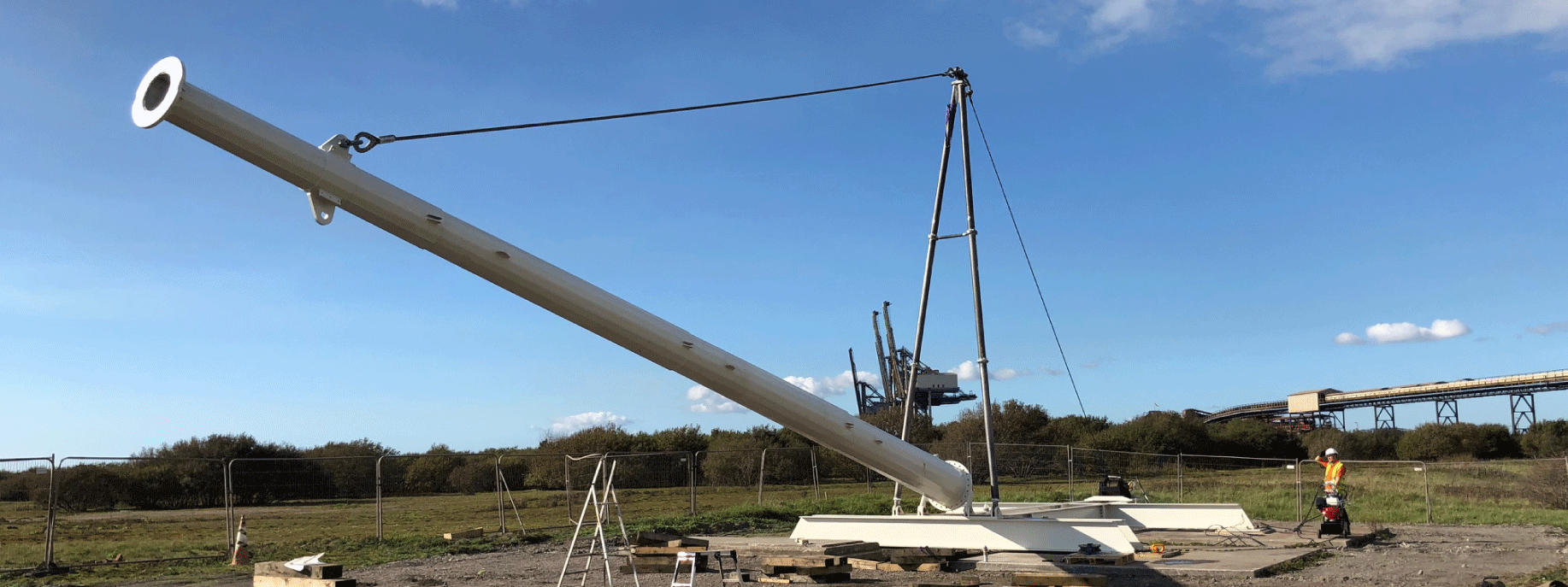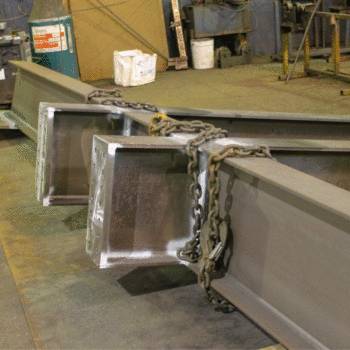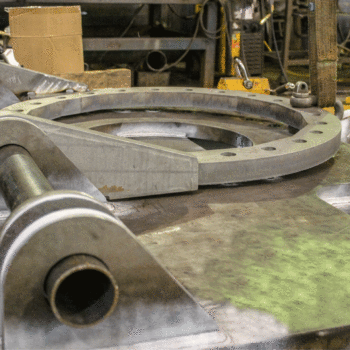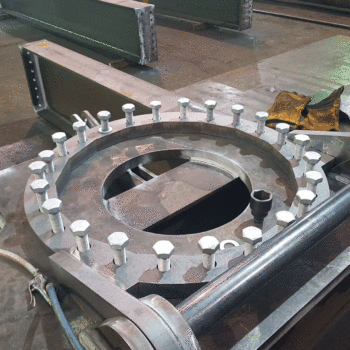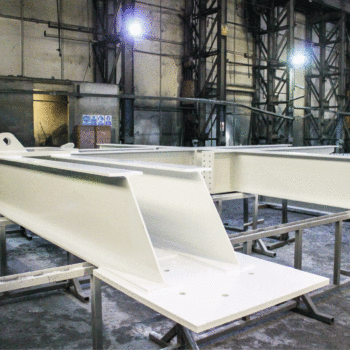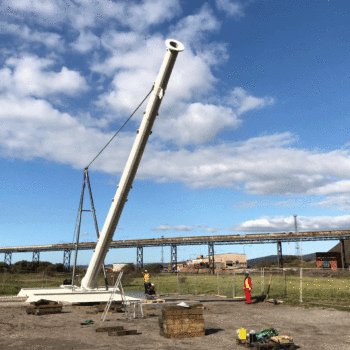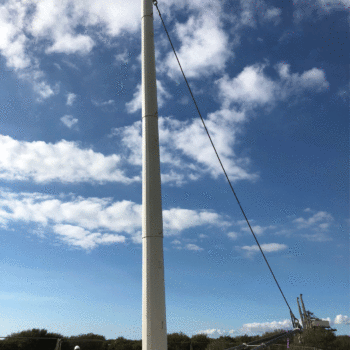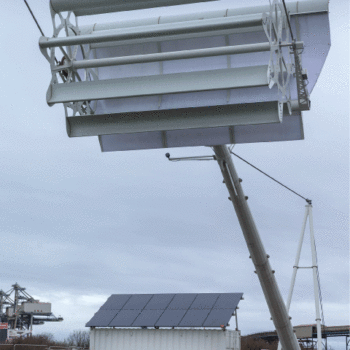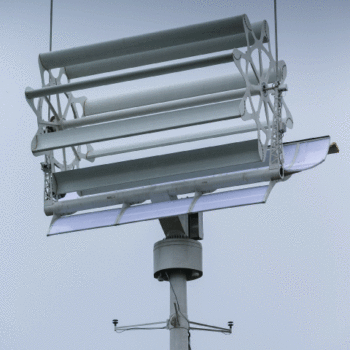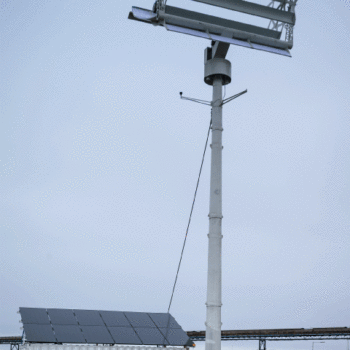We were asked by Crossflow to structurally check and give design assistance on an existing concept prototype design for a quick-install, modular wind turbine mast. Crossflow Energy empowers global communities by providing sustainable, clean energy. We were thrilled to be given the opportunity to work with Crossflow in order to bring wind turbine technology to communities around the globe.
Read more about Crossflow Energy and their work here: http://crossflowenergy.co.uk/
This innovative design is unique as the mast is delivered in 4 segments, which can be assembled on site, to allow the entire wind turbine to fit into a shipping container. This allows for low-cost, safe and containerised transportation to remote locations.
We produced 3D models and working drawings for a multisided, four piece, 16m mast. The mast would need the ability to be quickly assembled and erected for use in remote locations overseas and in disaster areas, where quick access to electricity generation is critical. This design would bring electricity to those who need it, more efficiently than most other turbines, with a focus on speed of installation.
During manufacture, the four, 16-sided sections were pulled together using hydraulic rams. This ensured there was a consistent design overlap. Rams were also used to assist in the erecting process to control the descent of the flange plate in the final portion of travel.
The modular A-frame was an essential part of the design, ensuring the load on the winch was reduced by changing the angle of the cable. The main beam platform structure was CNC cut and welded to precise tolerances. This was essential as the beam platform needed to fit onto existing Macalloy Studs, which were pre-cast in situ.
This mast was manufactured to the stringent BS EN 1090 standard, which required 100% MPI testing of the welds by our coded welders.
We provided a FORS vehicle, with a site offloading facility, so that Crossflow were able to position the frame directly onto the existing bolt positions. This would help to keep the installation process as efficient as possible, bringing energy to those who need it sooner.


